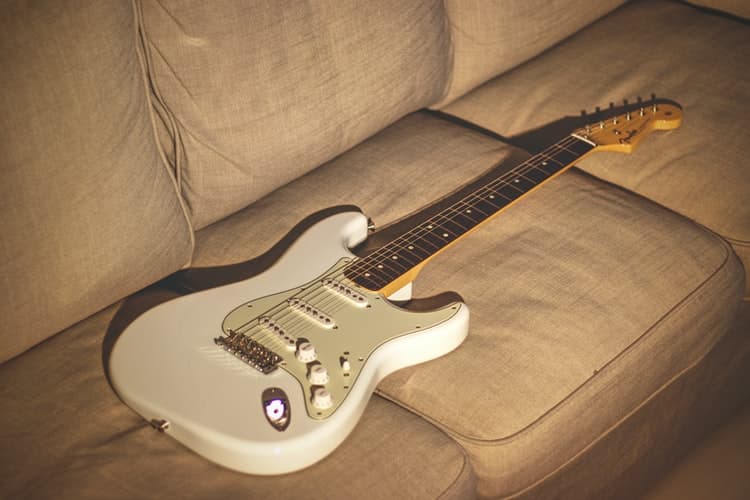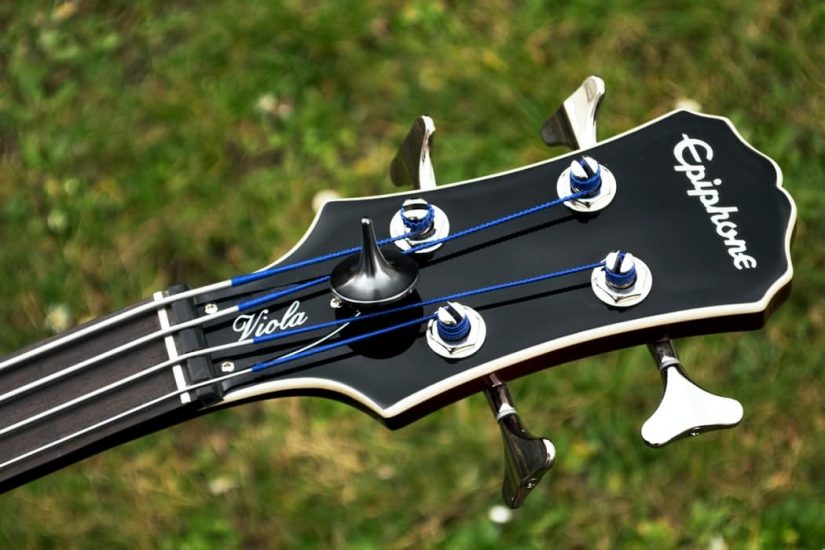Guitar brands history — Epiphone and Fender Stratocaster
History of Epiphone
Epiphone has roots back to 1865, when Greek instrument maker, Kostantinos Stathopoulo handed down the tradition to his oldest son, Epi, who created the company that bears his name to this day.
It was in 1940 when Les Paul , working long nights at home and at the Epiphone factory, created the famous “log” which would in just a few years, revolutionize electric guitar building. The “log”, made of a single piece of 4×4 lumber and an Epiphone arch top guitar cut down the middle, eventually became the Les Paul and was the precursor to hundreds of other electric guitars designs Today, the Epiphone Les Paul comes in a variety of different models and is one of the world’s most desired guitars.
Once a long time rival of Gibson, Epiphone is now a subsidiary of the company. To some, many Epiphone guitars are seen as less expensive versions of the Gibson models. While that might be true, Epiphone adds its own distinctive touches and employs their own construction secrets. Separate from its parent company, Epiphone has its own line of archtop guitars and continues to be an innovator in guitar and instrument manufacturing.
Their current catalog includes acoustics, solid body electrics, archtops, hollow body electrics, basses and a limited number of banjos, mandolins and amplifiers.
Guitars Manufactured
Epiphone’s designer line of electrics includes the Robb Flynn Love/Death Flying V, Jeff Waters Annihilation-V, Tak Matsumoto DC Standard, and their Nighthawk Custom Reissue which features a versatile combination of coil-tappable humbucker and single coil pickups. One of their more unusual guitars is the “Graveyard Disciple” with its distinctive casket shape and Floyd Rose Original Tremolo designed by Epiphone along with Zackk Wylde.
For acoustic players, there are a number of models including the Hummingbird and Hummingbird Artist, both of which are touted as more affordable versions of the same Gibson models. They also offer the EJ-200 Artist which is known as “King of the Flat Tops” and has a history going back to 1937 when it first appeared and was the guitar of choice for professional musicians of the time.
Epiphone has a line of great sounding acoustic electric models that feature advanced electronics including a Dave Navarro “Jane” with a Sitka spruce stop and Epiphone’s “eSonic” preamp system.
A recent revival of interest in Epiphone’s Casino archtops has lead to a number of versions including the Dwight Trash Casino, the Elitist, a model inspired by John Lennon and their basic Casino model, all featuring a clear, ringing tone that can be driven into a nice, tight distortion when needed.
Guitarists Playing Epiphone Instruments
Performing what would become the most recorded song in history, Paul McCartney played “Yesterday” on his 1964 Epiphone Texan FT-79 acoustic on the Ed Sullivan show in 1964. The Beatles also used Epiphone Casino E230TDs electrics on stage and in the studio and at that time, the company enjoyed a considerable bump in sales due to the huge popularity of the British group.
Other notable guitarists that play Epiphones include Rob Thomas, Zakk Wylde, John Lee Hooker, Howard Roberts and Jeff Baxter Joe Bonamassa. Thousands of guitar players, no matter what level of accomplishment, have held an Epiphone in their hands at one time or another and the distinctive E shaped logo is recognized the world over.
History of the Fender Stratocaster

Fender carefully marketed the Stratocaster so just about anyone could afford it even with the fact that they also had to buy an amplifier to go with it (music stores featured package deals of guitar and amp). One of the guitar ’s big selling points was (and still is) the fact that it’s lighter and easier to handle than most electric guitars – an important feature for gigging guitarists playing three or four hours a night or someone picking up a guitar for the first time.
Guitar Characteristics
The Fender Stratocaster’s five-position switch and its reverse-wound, reverse-polarity middle pickup provides a hum-cancelling effect and its three single coil pickups offer a number of different tones. The neck pickup has a round, fuller sound compared to the bright and sharper tone of the bridge pickup. The middle pickup provides a sound somewhere between the two. Everything is controlled by one volume and two tone controls.
Guitarists like the fact that the Strat’s bright, piercing tone can cut through even a full out bass and drum setup and the guitar is a choice for players who solo a lot – making the guitar particularly suited for the blues.
Stratocasters feature ash, alder or poplar solid bodies (other woods are available in some models). The maple necks often feature darker wood in a strip covering the single truss rod. The fingerboards traditionally are either maple or rosewood with single dot markers.
Guitarists Playing Fender Instruments
The list of artists and musicians who are associated with the Fender Stratocaster is extensive. Perhaps the most notable is Jimi Hendrix , a lefty who played a right-handed Strat upside down. More than anyone, Hendrix showed what one guitar player and one guitar can do as he explored a myriad of sounds and effects and expanded the possibilities of rock music at the time. Others who play various Stratocaster models include Eric Clapton , Stevie Ray Vaughan and Robbie Robertson of The Band, all of whom are deeply rooted in the blues. A number of artists such as John Mayer and Bonnie Raitt have been invited by Fender to collaborate on creating a signature guitar that carries their name.
With its contoured body shape, the Fender Stratocaster is a comfortable guitar to play (although some claim it’s difficult to play when sitting down). It is lighter than a Les Paul , well-balanced and its five-way pickup switch (replacing the early three position switch) gives a wide variety of subtle tone changes and helps keep the instrument’s output quiet. The Strat’s pickups are standard with humbuckers being available on certain models. The latter are often called “Fats Strats” due to the humbucker’s higher bass output and rounder sound.
Most Strats come with a simple three-spring tremolo that works well but is not favored by most Strat players. The fully adjustable bridge (six individual bridges actually) allows for precise tuning and setup.
Fender recently introduced their “Road Worn” series of guitars, including the Stratocaster, giving new guitars a look of years and years of use. This demonstrates how valued the original Strats are and the musician’s desire to have a guitar that looks like a “veteran” instrument that has paid its dues.

